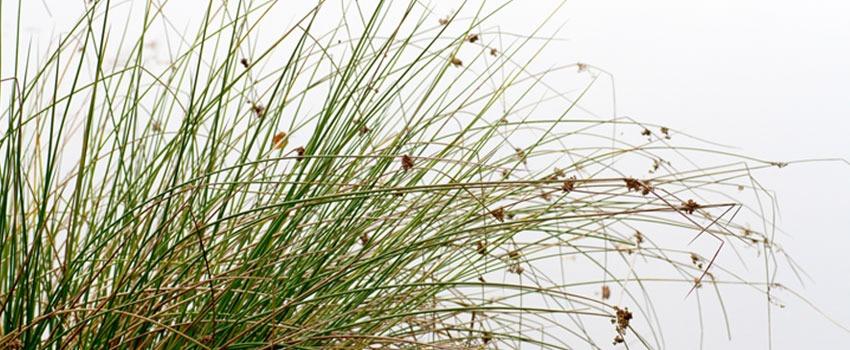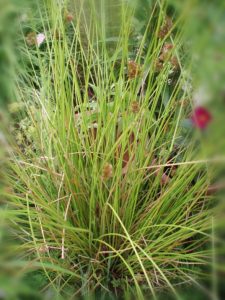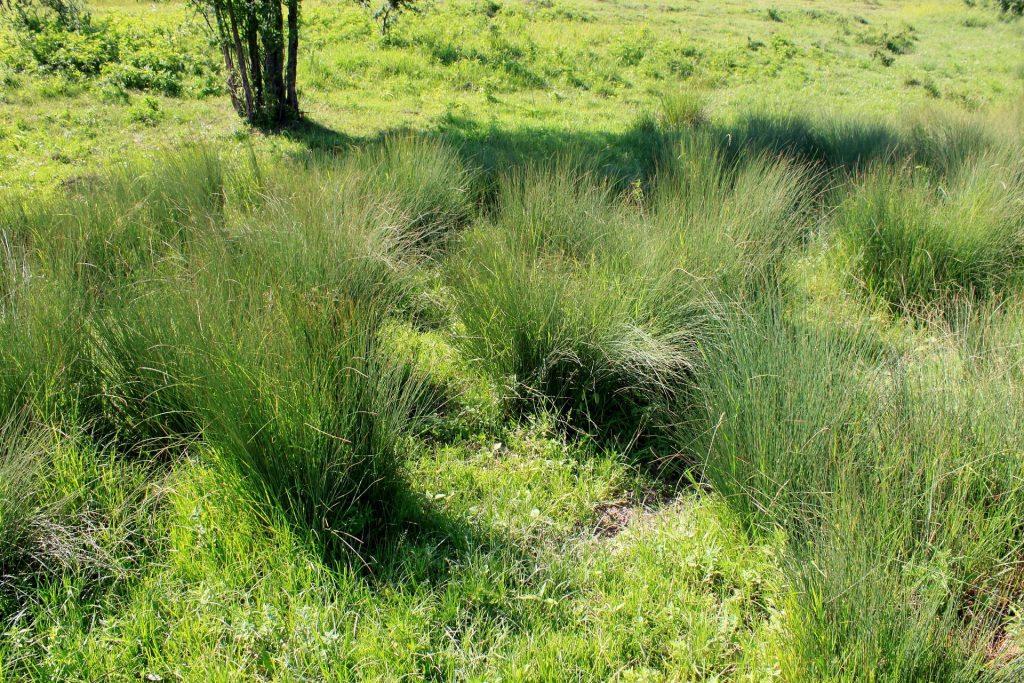Not a RUSH job – Treatment and recognition of Soft Rush in paddocks and grassland areas
Soft Rush (Juncus effesus) is an ongoing problem for grassland grazing and hay production areas.
Although there are 21 varieties of Rush in the UK & Ireland the main four species that can cause a problem are: the Soft Rush and Hard Rush that form tussocks or ‘babies heads’ and creeping varieties: Articulated Rush or Sharpflowered Rush.
Soft Rushes are perennial plants that thrive in damp and waterlogged fields and are well adapted to survive in a range of pH (acid/ alkali) soils, eg; pH 3-7.
Recent wet winters and summers have provided ideal rush growing conditions and severely limited the opportunity to control infestations.
SPREAD: Seeds
Rushes spread rapidly via seed. One plant can produce: 8,500 - 13,000 a year (obovoid-shaped capsule in sets of three), which are light and easily dispersed in the wind.
- Common rush seeds can lie dormant in soils for up to 60 years.
- Heavy livestock grazing, poached grass, compaction or soil disturbance during wet winter can all lead to dormant Rush seeds taking hold in spring. They will germinate quickly and outcompete grass seeds.
TREATMENT:
- Typical Rush pastures and damp grassland areas are a very important breeding habitat for birds so take care if cutting or spraying. Certain ground nesting birds may use the rushes for cover until July- August.
- Creeping rushes die back in winter and will be eaten more readily by stock than the tussock rushes (Soft Rush) making them easier to control by grazing. Cattle are generally better than sheep at suppressing rushes. They are also less tolerant of cutting, being readily controlled by a single late summer cut.
- Topping/ cutting with a rotary or flail mower before the plants produce seed can help slow the spread of Rushes. New fresh shoots are more susceptible to a herbicide application. Topping should take place before the seed produced that year becomes viable, ie in late spring or early summer.
- Cut rushes as low as possible without scalping the soil. Multiple cuts may be required to gain control but best results come from an integrated treatment programme of cutting & spraying.
Spraying
- Glyphosate is a total weedkiller that can be sprayed on to Rush however it will affect surrounding plants or grass unless care is taken to minimise overspray and drift. An adjuvant will improve its ability to stick and penetrate its outer waxy surface.
- A well-timed application of glyphosate through a weed wiper can minimise any danger of drift. It is particularly effective when applied to fresh, green regrowth after topping or mowing. On large tussocks, the weed wiper may not make contact with the “underside” of the tussock requiring a second application.
- For large areas spray with a tractor using a boom spray. A selective herbicide containing MCPA, such as Agritox, works well on young Rushes and it will not harm the grass.
- A common mistake is to turn soil and re-seed affected land. This only exposes dormant Rush seeds to light & moisture – potentially making the situation worse. Only consider this if soil can be turned and buried at least 250mm deep*
TOP TIPS:
- Avoid letting Rushes flower and seed by topping or grazing mid-spring-early summer
- Avoid excessive winter grazing to keep swards undamaged and free of compaction
- Only consider re-seeding where deep ploughing and burying of seed can take place
- Herbicide works better on new growth. Top and chop tussocks then wait for young re-growth
- Agritox (MCPA) is a selective herbicide that does not kill grass. It must be used in a boom sprayer (tractor/ quad)
- Avoid drift by using glyphosate in a weed-wiper
*AHDB – Source Article: Management and Control of Common (Soft) Rush







